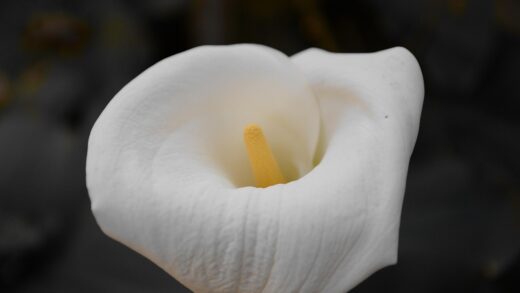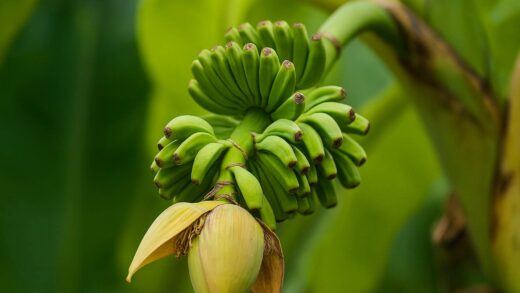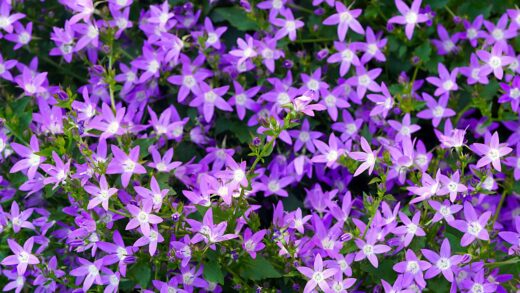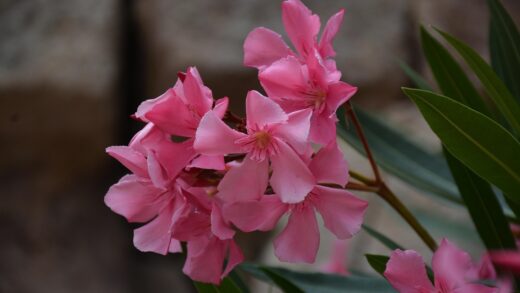The spectacular display of an Asiatic lily, with its bold colors and perfectly formed blooms, is a testament to the energy stored within its bulb. To fuel this annual spectacle, these lilies require a consistent and well-balanced diet. Understanding their specific nutrient requirements and implementing a sensible fertilization strategy is fundamental to achieving the most vigorous growth and prolific flowering. Proper feeding does more than just create beautiful flowers; it builds a stronger, healthier plant that is more resilient to pests and diseases. Providing the right nutrients at the right time is an investment that pays off in a truly breathtaking garden display.
Asiatic lilies are considered moderate feeders, meaning they benefit from regular fertilization but are also sensitive to over-fertilization. Their nutritional needs are centered around the three primary macronutrients: nitrogen (N), phosphorus (P), and potassium (K). Nitrogen is essential for lush, green foliage and strong stem growth. Phosphorus plays a critical role in the development of a robust root system and is directly linked to flower production. Potassium contributes to the overall vigor of the plant, helping it to efficiently use water and resist disease. A deficiency in any of these key nutrients can lead to stunted growth, yellowing leaves, and a disappointing lack of blooms.
The ideal fertilizer for Asiatic lilies is a balanced, all-purpose formula or one that is slightly higher in phosphorus. A 5-10-5 or 10-10-10 granular fertilizer is often a good choice. The numbers represent the percentage of nitrogen, phosphorus, and potassium, respectively. The higher middle number (phosphorus) specifically encourages abundant flowering and strong bulb development. Slow-release granular fertilizers are particularly well-suited for lilies, as they provide a steady supply of nutrients over an extended period, preventing the boom-and-bust cycle that can occur with liquid fertilizers.
Beyond the primary macronutrients, Asiatic lilies also require a range of micronutrients for optimal health, although these are needed in much smaller quantities. Elements like magnesium, calcium, and sulfur are important for various cellular functions. The best way to ensure your lilies have access to these essential micronutrients is to cultivate a healthy, living soil. Regularly amending your garden beds with rich organic matter, such as compost or well-rotted manure, creates a fertile environment that is teeming with beneficial microorganisms that make these nutrients available to the plant’s roots.
It is crucial to recognize that more fertilizer is not better. Over-fertilizing, particularly with high-nitrogen formulas, can be detrimental to Asiatic lilies. Too much nitrogen can stimulate excessive leafy growth at the expense of flowers, resulting in tall, weak stems that are prone to flopping over. It can also make the bulbs softer and more susceptible to rot and disease. Always follow the application rates recommended on the fertilizer packaging and err on the side of caution. A well-balanced approach that combines organic soil amendments with judicious use of a balanced fertilizer will yield the best results.
More articles on this topic
The timing of fertilization
The timing of your fertilizer applications is just as important as the type of fertilizer you use. The goal is to provide nutrients when the plant needs them most to support its various growth stages. The first application of fertilizer should be done in early spring, just as the new lily shoots are beginning to emerge from the soil. This initial feeding provides the essential nutrients needed to fuel the rapid development of stems and foliage. A balanced, slow-release granular fertilizer is perfect for this first application.
A second application can be beneficial about a month to six weeks after the first, typically when the flower buds are beginning to form on the stems. This provides an extra boost of energy to support the development of large, numerous, and vibrant blooms. This is a period of high energy demand for the plant, and ensuring it has adequate nutrition can make a noticeable difference in the quality of the floral display. A fertilizer slightly higher in phosphorus and potassium is ideal at this stage.
It is generally recommended to stop fertilizing once the lily begins to flower. Adding fertilizer during the blooming period can sometimes shorten the lifespan of the individual flowers. Furthermore, you should avoid fertilizing in the late summer or autumn. Late-season feeding can encourage a flush of new, tender growth that will not have time to harden off before the first frost, potentially damaging the plant. It can also interfere with the bulb’s natural process of preparing for winter dormancy.
After the flowers have faded, the plant’s primary job is to store energy in the bulb for the next season. The nutrients required for this process should already be present in the soil from the earlier spring applications and the natural nutrient cycling within the plant itself. The focus during the post-bloom period should be on providing adequate water and allowing the foliage to die back naturally, rather than on adding more fertilizer. A healthy soil environment, established through good preparation and spring feeding, is sufficient to see the bulb through its dormancy preparation.
More articles on this topic
Organic vs. synthetic fertilizers
When it comes to feeding Asiatic lilies, gardeners have the choice between organic and synthetic fertilizers. Organic fertilizers are derived from natural sources, such as compost, bone meal, blood meal, and well-rotted animal manures. These materials release their nutrients slowly as they are broken down by microorganisms in the soil. This slow-release action is very beneficial for lilies, as it provides a steady, gentle feed and reduces the risk of fertilizer burn. Organic matter also dramatically improves soil structure, aeration, and water retention, creating a healthier overall environment for the bulb.
Synthetic fertilizers, on the other hand, are manufactured chemical products that provide nutrients in a concentrated, water-soluble form. They offer the advantage of being fast-acting, providing a quick boost to plants. The nutrient content is precisely controlled and readily available to the plant’s roots. However, they do little to improve the long-term health of the soil and, if over-applied, can lead to a buildup of salts in the soil, potentially harming beneficial microorganisms and the plant itself. There is also a greater risk of nutrient runoff, which can have negative environmental impacts.
A highly effective approach is to use a combination of both organic and synthetic fertilizers. Start by building a foundation of healthy soil through the generous incorporation of compost and other organic matter at planting time and as an annual top dressing. This creates a fertile base that provides a slow, steady supply of a wide range of nutrients. You can then supplement this with a balanced, slow-release granular synthetic fertilizer in the spring to provide the targeted boost of N-P-K that supports vigorous growth and flowering.
For Asiatic lilies, bone meal is a particularly useful organic amendment. It is a rich source of phosphorus, which is essential for strong root growth and abundant flower production. It can be mixed into the soil at the bottom of the planting hole when you first plant the bulbs. This places the slow-releasing phosphorus directly in the root zone where it is most needed. This integrated approach, which focuses on long-term soil health while providing targeted nutrition, is the most sustainable and effective way to fertilize your Asiatic lilies.
Application techniques
Proper application of fertilizer is essential to ensure that your lilies receive the maximum benefit without suffering any harm. For granular fertilizers, the most common and effective method is top-dressing. This involves sprinkling the measured amount of fertilizer on the soil surface around the base of the plants. Be careful to avoid letting the granules come into direct contact with the lily stems or leaves, as the concentrated chemicals can cause burns and damage the plant tissue.
After spreading the granular fertilizer, it is a good practice to gently scratch it into the top inch of soil using a hand cultivator or your fingers. This helps to begin the process of incorporating the nutrients into the soil and prevents them from being washed away by a heavy rain. Following the application, you must water the area thoroughly. Watering serves two important purposes: it dissolves the fertilizer granules and it helps to carry the nutrients down into the root zone where they can be absorbed by the plant.
If you choose to use a water-soluble liquid fertilizer, it is typically applied every two to four weeks during the active growing season, starting in early spring. Mix the fertilizer with water according to the package directions. It is often better to use a half-strength solution to avoid the risk of over-fertilizing. Apply the liquid fertilizer to the soil around the base of the plants, thoroughly soaking the root zone. As with granular fertilizers, avoid splashing the mixture onto the foliage if possible.
Regardless of the type of fertilizer you use, always start with a soil test if you are unsure about your soil’s nutrient content. A soil test can provide valuable information about your soil’s pH and any specific nutrient deficiencies or excesses. This allows you to tailor your fertilization program to the precise needs of your garden, ensuring you are providing exactly what your Asiatic lilies need to thrive. This scientific approach removes guesswork and leads to healthier plants and a more successful garden.
Recognizing nutrient deficiencies
Observing your Asiatic lilies closely can provide clues about their nutritional status. While a soil test is the most accurate way to diagnose a problem, certain visual symptoms can indicate a potential nutrient deficiency. A general lack of vigor, stunted growth, and sparse, small flowers are all signs that the plant may not be receiving adequate nutrition. These symptoms suggest that a balanced fertilizer is needed to improve the overall health of the plant.
A nitrogen deficiency often manifests as a general yellowing of the leaves, typically starting with the older, lower leaves on the stem. The plant may also appear pale and spindly. If you observe these symptoms, a dose of a balanced fertilizer should help to correct the issue. However, remember that too much nitrogen can inhibit flowering, so apply it judiciously and as part of a balanced nutritional program.
Phosphorus deficiency can be more difficult to diagnose visually. It may result in stunted growth and, in some plants, a purplish discoloration of the leaves, although this is less common in lilies. The most significant symptom of a phosphorus deficiency is a marked reduction in flowering. If your lilies are producing healthy green foliage but few or no blooms, a lack of phosphorus could be the culprit. Amending the soil with bone meal or a high-phosphorus fertilizer can help to remedy this.
Potassium deficiency can lead to weak stems and a general susceptibility to disease. A classic sign is the yellowing or browning of the leaf margins and tips, starting with the lower leaves. The plant may also appear less resilient to stress from heat or drought. Ensuring your lilies receive a balanced fertilizer that includes adequate potassium, often referred to as potash, is essential for their overall strength and resilience. A healthy, well-fed plant is always better equipped to fend for itself.


















